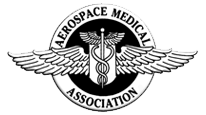The Federal Air Surgeon’s Medical Bulletin • Summer 2002
Revised July 8, 2006 – By Virgil D. Wooten, MD
Recognition of the causes and signs of fatigue is central to safe and effective air operations
Since World War II, flight operations have been increasingly performed over longer distances, longer intervals, and across multiple time zones. The biology governing the performance of men and women has not changed, however. The timing, quality and quantity of sleep needed may vary among individuals, but among all people, unalterable physiological needs exist.
Efforts are being made within aerospace to design and employ behavioral and pharmacological interventions to overcome the effects of fatigue and sleepiness in personnel required to operate in a sleep-deprived condition and at times when they would normally be sleeping.
Accidents are caused by human error 80% of the time. The role of fatigue and circadian rhythm disorders (desynchronosis) in these mishaps is probably underestimated. Recognition of the causes and signs of fatigue is central to safe and effective air operations.
The tendency to sleep cycles over a 24-hour period. Maximal sleepiness occurs between 0600 and 0800. Although not as imposing, another episode of sleepiness occurs between 1400 and 1600. Adaptation to a new time zone or shiftwork pattern takes up to 3 weeks, depending on individual differences, the frequency and magnitude of the time shifts. Various environmental (light, activity) and social factors (sleep habits, social interactions, work schedule) may either assist or prevent the accommodation to a new schedule.
Sleepiness and fatigue cause reduced ability to function. Lapses (the failure to respond to a situation) increase. Lapses may be associated with microsleeps (episodes of sleep lasting 0.5 to 10 seconds) but can also occur without sleep onset. The four sleep-related factors involved in fatigue-induced performance impairments are the circadian phase of the biological clock, the presence of acute sleep loss, the presence of cumulative sleep loss and the presence of sleep inertia. Lapses increase 2 to 10 times during night operations without pre-existing sleep loss. Acute sleep loss (following a single night of sleep loss) results in 4 to 10 times more lapses, while chronic sleep deprivation by reducing sleep 2-3 hours per night for 1 week may increase lapses by 3 to 5 times normal. Sleep inertia is the difficulty awakening from a sleep episode. Sleep inertia results in increased lapses and is most likely to be present after abrupt awakenings and awakening from stages 3 and 4 NREM sleep.
The potential for catastrophe due to lapses is enormous. An aircraft going 250 kts on a glide-path, for example, can travel over 400 feet during a 1-second lapse. Micro-sleeps have been shown to occur in aircrew during landing approaches in commercial carriers.
The degree of resulting fatigue and risk of mishaps are dependent on the type of aircraft, mission, operations schedule, and environmental conditions. Increased workload and turbulence tend to exacerbate the effects of sleep loss and jet lag. Reaction times may be markedly slowed, which can be critical when rapid reactions are necessary. False responding also increases, i.e. the pilot may take action when no action is warranted, especially when aware of having missed signals. The resulting anticipation of another event and over attention on individual signals or problems further reduces situational awareness. Fatigue increases calculation errors, logical errors, and ineffective problem-solving. The member is less able to think of new solutions and repeatedly tries the same approach to a situational problem.
Memory deficits progressively worsen with fatigue and sleep loss. The sleepy and tired crewmember reads or hears instructions repeatedly but cannot retain the information, leading to critical errors and uncertainty about the status of the situation. Performance variability results from increased lapses and errors of omission. Although the member often becomes aware of the shortcomings in performance and responds by trying to increase self-motivation and effort, performance improvement is short-lived. He/she may perceive the operation as more stressful and tiring as the effort continues. Ultimately, the crewmember’s motivation to perform well and avoid risks erodes.
No individual is immune to the effects of sleep loss and fatigue, although there are individual differences in the ability to tolerate sleep loss. After one night of sleep loss, half of healthy individuals perform reasonably well, but the remainder exhibit moderate to severe performance deficits. After 36 hours, there is little difference between individuals in their ability to perform-all have severe performance deficits.
The ability of a fatigued crewmember to self-assess alertness is also limited. In fatigued individuals, initial good performance early on may give a false sense of security. As time goes by, performance deteriorates. A crewmember is also more likely to overestimate his or her ability to perform if asked about being tired or able to perform. Relief from other crewmembers when signs of fatigue are observed (eyelids drooping, yawning, irritability, forgetfulness) is crucial.
Every flight operation has its own tempo, time required to perform the major tasks, personnel structure, and number of personnel. There are a number of different aerospace scenarios, ranging from mundane short- and long-haul ferrying operations, to combat and space flight. Prevailing cultural attitudes may pose a hindrance to adequate resting and napping. Our society now sleeps about an hour less on average than our ancestors a century ago. Sleep and the demand for productivity are at odds, and adult napping is virtually frowned upon.
Extensive government research into fatigue has yielded important information about techniques to improve performance and safety during prolonged and/or night-time flying. Basic principles to keep in mind are listed below. Naps are defined as intentional sleep lasting less than half the length of the major sleep period.
- Do not overwork or under-sleep before flying
- Naps taken before and at the beginning of flights at night improve performance.
- Two nights of normal sleep before flying greatly improve performance.
- Two nights of normal sleep at the end of an operation are necessary to recover from the effects of sleep deprivation.
- A night off in a long series of night operations helps restore function.
- Naps are possible during the day, especially in the mid-afternoon sleepiness phase.
- Naps are a stopgap approach to improve performance and safety for limited periods of time, not an indefinite substitute for long sleep periods during biological night.
- Make an attempt to anchor sleep when sleeping in a different time zone by getting some of the sleep during home base sleeping hours.
- The longer the nap, the better the improvement in performance.
- The longer the nap, the longer it takes to awaken (more sleep inertia).
- Longer and harder operations require more napping.
- At least 20 minutes should be allowed to awaken from a nap to allow dissipation of sleep inertia.
- Noise and activity help dissipate sleep inertia.
- When possible, engage in conversation, stretch, and move about to improve alertness.
- Caffeine can help maintain alertness but may disrupt sleep if used too close to desired sleep times.
- Alcohol use may interfere with sleep quality and performance.
- Napping will not promote circadian adjustment to night flying.
- Relaxation techniques and sleep hygiene can assist napping and adjustment to a new circadian schedule.
- The napping environment should be as free as possible from noise, light, temperature extremes, and interruptions.
- Lying down and sleeping is more beneficial than trying to sleep with chest elevated.
- Maintain a meal schedule with healthy and nutritional food to minimize gastrointestinal problems associated with night operations.
Stimulants and sedatives are currently used in US military and foreign commercial operations. There may be a role for stimulants such as modafanil, pemoline, methylphenidate, and amphetamines in defined settings. The same is true for short- and intermediate-acting sedatives. Even short-acting sedatives can impair next-day performance, however, and reasonable concerns exist about the effect of stimulants on sleep, emotions, and performance. For the time being, though, US private pilots and flight crews are prohibited from using medications discussed above.
Poor Seep Habits May Contribute to Fatigue.
- Use the bed primarily for sleep.
- Avoid looking at the time. Set an alarm and ignore the time.
- Avoid alcohol, caffeine, and heavy meals before bed.
- Schedule a worry time, planning session, and wind-down time before getting into bed. Make lists of things to do the next day.
- Make the bedroom quiet, comfortable, dark, and secure. Use white-noise generators if the environment is noisy. Minimize disruptions.
- Get out of bed after lying awake for more than 20 minutes-do something boring or try relaxation techniques.
- Avoid exercise and hot baths within 3 hours of bedtime.
- Exercise regularly, in the morning or afternoon.
- Keep a regular bedtime and get-up time.
- Do not spend excessive amounts of time in bed, e.g., if you can sleep only 7 hours, spend no more than 7.5 hours in bed.
- Avoid excessive napping, which can interfere with your ability to sleep at night.
References
- Caldwell JA. The impact of fatigue in air medical and other types of operations: A review of fatigue facts and potential countermeasures. Air Med J. 2001 Jan-Feb;20(1):25-32
- Samel A, Wegmann H-M, Vejvoda M, et al. Two-crew operations: Stress and fatigue during long-haul night flights. Aviat. Space Environ. Med. 1997; 68:679-87.
- Crew factors in flight operations: The initial NASA-Ames field studies on fatigue. Aviat. Space Environ. Med. 1998; 69(9, Suppl.):B1-B60.
- Ferrer CF, Bisson RU, French J. Circadian rhythm desynchronosis in military deployments: a review of current strategies. Aviat. Space Environ. Med. 1995; 66:571-8.
- Emonson DL, Vanderbeek RD. The use of amphetamines in US Air Force tactical operations during Desert Shield and Storm. Aviat. Space Environ. Med. 1995; 66:260-3.
Dr. Wooten is a special medical consultant in sleep disorders to the Federal Air Surgeon, is an FAA aviation medical examiner, and is the Medical Director of TriHealth Sleep and Alertness Center, Good Samaritan and Bethesda Hospitals, Cincinnati, Ohio.



